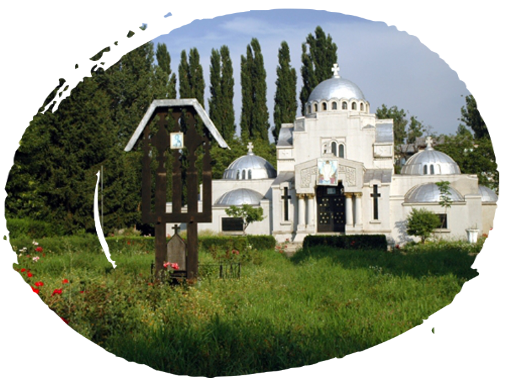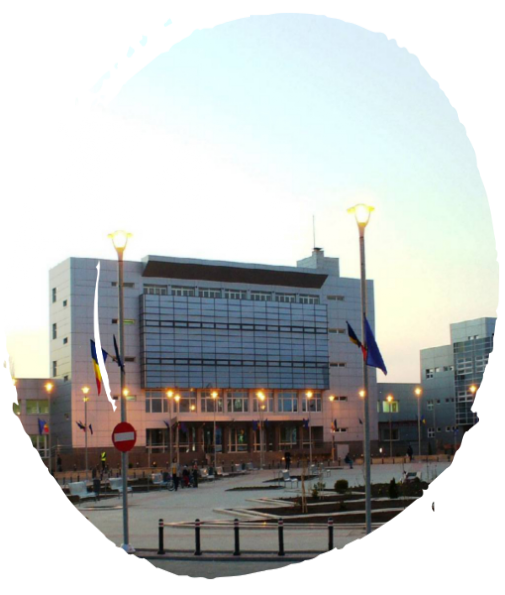Locations
Everywhere you look today you will have something new to observ or to learn about. Being a small town means that you can reach the objectives on foot, all this time being able to observe the atmosphere, the inhabitants but also other beauties that cannot be described in words.

Union Square
A place of great hystorical significance. In the middle of the square it is placed the Union Obelisk, it was made by a team of sculptors led by Ion Jalea. Its octagonal base is 1.4m high, and three steps covered with red granite, over which rises a bronze torus with a height of 2.4m.
The square is located on the old border between Wallachia and Moldova. Here every year on January 24’th it is celebrated the grand act of the Union.

Popular Athenaeum Major Gh. Pastia (1927-1945)
The existence of this popular athenaeum is linked to the personality of Major Gh. Pastia, which founded the theater in the Milcov city.
Beginning in 1926, its financial effort was focused in building the popular athenaeum which lately carry his name.

Church of St. John
The church was part of a former monastery, dedicated
to the “Birth of St. John the Baptist”, which was founded by Grigore Ghica in
1661.
The monastery was built on the old border that use to separate
Moldova from Muntenia. Today the church is located in the public garden of Focșani.
In 1854 the monastery burned down and the church was saved. The church was
built of brick on a cross stone foundation with three aisles and classical
divided: the narthex, nave and altar. . Until the restoration in 1977 there
were kept inside small areas of painting and the facades were plastered and decorated with two rows of overlapping
niches.

Focșani landmark
The landmark between Moldova and Ţara Românească was inaugurated in
1931 by Nicolae Iorga, Prime Minister of Romaniat at that time.

New St. Nicholas Church
Foundation date is unknown. A document dated from 22 May 1696 is
consider by some the foundation date.
Because the bell tower is
located to the left of the building, over the extension of the narthes, the
church fits a different category than the usual arhitecture of Putna county.

Heroes mausoleum
Memorial monument was erected by sculptor C.
Demetrescu, in the years 1924-1926, in memory of the heroes that fought in the
WW I.
Mausoleum expose weapons, art and photos related to
WW I.

Focșani Prefecture (old headquarters)
An old three floors
building with more then 80 rooms, including two large meeting rooms, has housed
until the revolution of 1989, two institutions with administrative role over
the well known “Milcov” town.
In the beggining this
building was the Putna Prefecture, then Vrancea Prefecture and in 1977 Focșani
city hall. From Nicolae Ioarga until Nicolae Titulescu, all great political anc
cultural names have made their contribution to enrich the reputation and
history significance of this building.
The arhitecture of this
bulding is the specific traditional Romanian style erected in the twentieth
century. Perhaps the most attractive and interesting design element is the
design of the roof tiles, made from a model used in the Suceava (city located
in the far noth of Romania) monasteries.

History Museum
The museum was created in 1931 at the initiative of
Prof. Al. P. Arbore from the Focșani -Union High School, with the support of S.
Mehedinti in two halls of the school known as Putna Regional Museum.
Vrancea museum complex includes sections of
history and archeology as well as ethnography and natural science.

Museum of Natural Sceince
Initially it was the museum of hunting,
housing the collection of the theacher Anghel Bardan, in 1951 due to the large
large number of objects and diversity it becomes a museum.
The museum houses flora and fauna that can be
fount throw out Vrancea county (around 3000 pieces of collection), shellfish,
mine flowers a well as an aquarium.

Roman catholic church – “St. Peter and Paul”
Work at this building began in 1990. The
exterior of the church presents a modern style, the sides are shaped as a barrel
and the front is shaped as a mandoline.
In the center of the church a marble altar
table is located where the ministry takes place.

Gheorghe Pastia Theater
Historical monument, was built at the initiative of
major Gh. Pastia, descendant of a wealthy family in Focșani, which donates the
sum of 300000 lions (old money), required to build a local theater. The
donation act was logged on April 8’th 1908 at Putna Court.
On 11’th of September 1909 the first stone was placed
in the presence of Prime Minister, Minister of Industrial and Trade and
Minister of Justice. On this occasion, it was issued a jubilee medal on which
was inscribed the name of the donor Major Gh. Pastia, mayor I.G. Poenaru, the
engineer architect C. Ciugolea and S. Vasilescu.

National Union College
The Union High School was founded in January 1866 by a Royal Order
issued out in 10’th of August 1865.
It was among the first
secondary institution in the country.

National college Alexandru Ioan Cuza
In the 1889 a group of teachers set up a secondary girls hospital. The
name Al. I. Cuza will be given to the institution in 1958, and only in 1965 the
name will be High School Al. I. Cuza.
In 1990-2000 in
recognition of its value it will be named National College Alexandru Ioan Cuza.

Focșani train station
Focșani was and still is an important railway point
that links Moldova with the rest of the country.
In the place which housed the old station now stands a
modern building, majestic, four floors
high, paved with polished marble, shimmering in shades of gray.
Reach out
If you want, you can contact me by accessing the section below. Maybe you have a different opinion or new information, I am at your disposal.